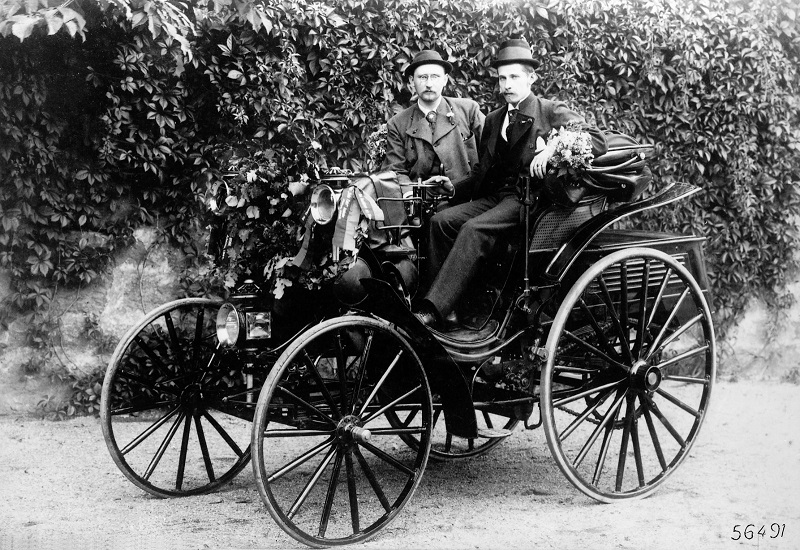In the summer of 1894, Baron Theodor von Liebieg embarked on a remarkable journey that spanned nearly 1,000 kilometers from east to west Europe, a feat that highlighted the cutting-edge technology of the Benz Victoria and its revolutionary double-pivot steering system. This journey, undertaken just a year after the Benz Victoria premiered with this new steering technology, demonstrated the vehicle’s sophisticated design and its significant advancements in safety and comfort.

A Historic Journey
Baron von Liebieg, the son of a manufacturer from Reichenberg (now Liberec, Czech Republic), was an early customer of Carl Benz. Intrigued by the technological innovations of the Benz Victoria, von Liebieg visited Carl Benz in Mannheim in 1893, where he decided to purchase the car. By spring 1894, the vehicle was delivered to him by rail, the customary method for long distances at that time.
Technological Breakthroughs
The Benz Victoria was equipped with a pioneering double-pivot steering system, which Carl Benz had developed to enhance safety and comfort. Unlike conventional drawbar steering, which involved swiveling the entire front axle around a pivot point, the double-pivot system allowed each front wheel to be steered independently. This innovation significantly reduced the risk of tipping over on tight bends and represented a major advancement in automotive technology.
The Journey Begins
On July 16, 1894, at the age of 22, von Liebieg, accompanied by his friend Franz Stransky, set off on an ambitious journey to Gondorf on the Moselle. The journey, meticulously documented in von Liebieg’s richly illustrated diary, provides extensive details about their experiences and challenges along the way.
Challenges and Achievements
Despite improvements in automotive technology since Bertha Benz’s pioneering journey in 1888, von Liebieg’s adventure was still fraught with challenges. The roads were not designed for motor vehicles, and there was no reliable refueling infrastructure. Motorists had to purchase petrol from pharmacies or chemists and fill the car’s brass tank manually. The Benz Victoria consumed more than 20 liters of petrol per 100 kilometers, and the journey took 69 hours over six stages, covering a total distance of 939 kilometers.
Arrival and Reception
Von Liebieg and Stransky arrived in Gondorf after their arduous journey. Historical photos show that von Liebieg’s car was similar to the Benz Victoria on display at the Mercedes-Benz Museum, characterized by wood-spoked wheels, block brakes, a chain drive, a high seating position, and a folding soft top. The single-cylinder engine produced 2.9 kW (4 hp) from a displacement of 1,990 cubic centimeters.
A Testimony to Early Automotive Spirit
Von Liebieg’s journey not only demonstrated the potential of the automobile for long-distance travel but also underscored the excellent service ethic at Benz & Cie. The vehicle underwent extensive servicing in Mannheim during the journey, and a Benz mechanic was dispatched to address a breakdown on the Moselle.
Legacy of the Benz Victoria
The “Benz Journey” undertaken by von Liebieg in 1894 proved that motor cars were capable of covering great distances, paving the way for future automotive endeavors. This journey was a precursor to the advent of motorsport, with the first automobile race from Paris to Rouen occurring in the same year. Von Liebieg himself continued to be involved in early motorsport events, contributing to the rich history of automotive innovation and competition.
The Benz Victoria and von Liebieg’s journey remain significant milestones in the history of the automobile, showcasing the ingenuity and adventurous spirit of early automotive pioneers.






